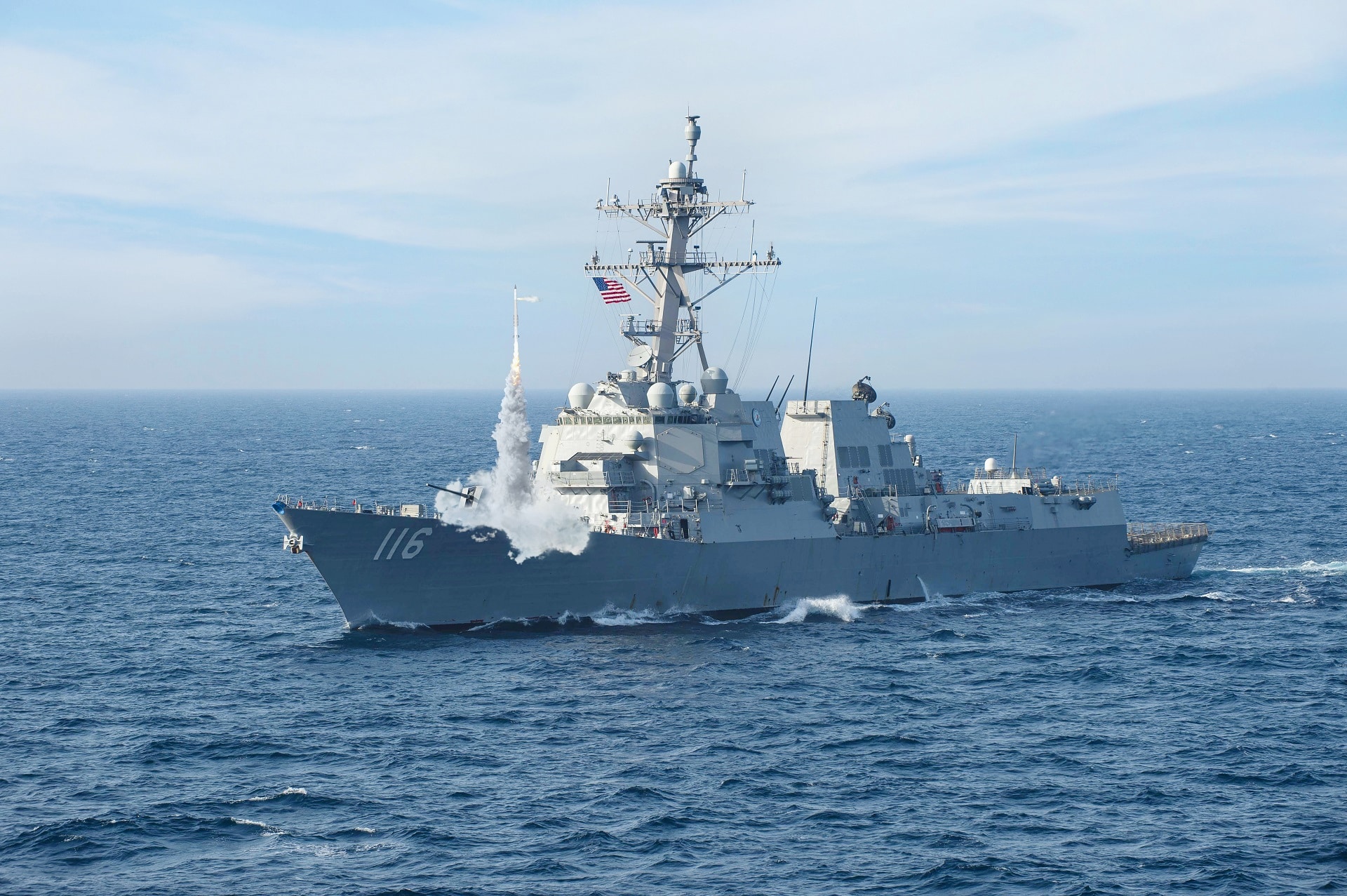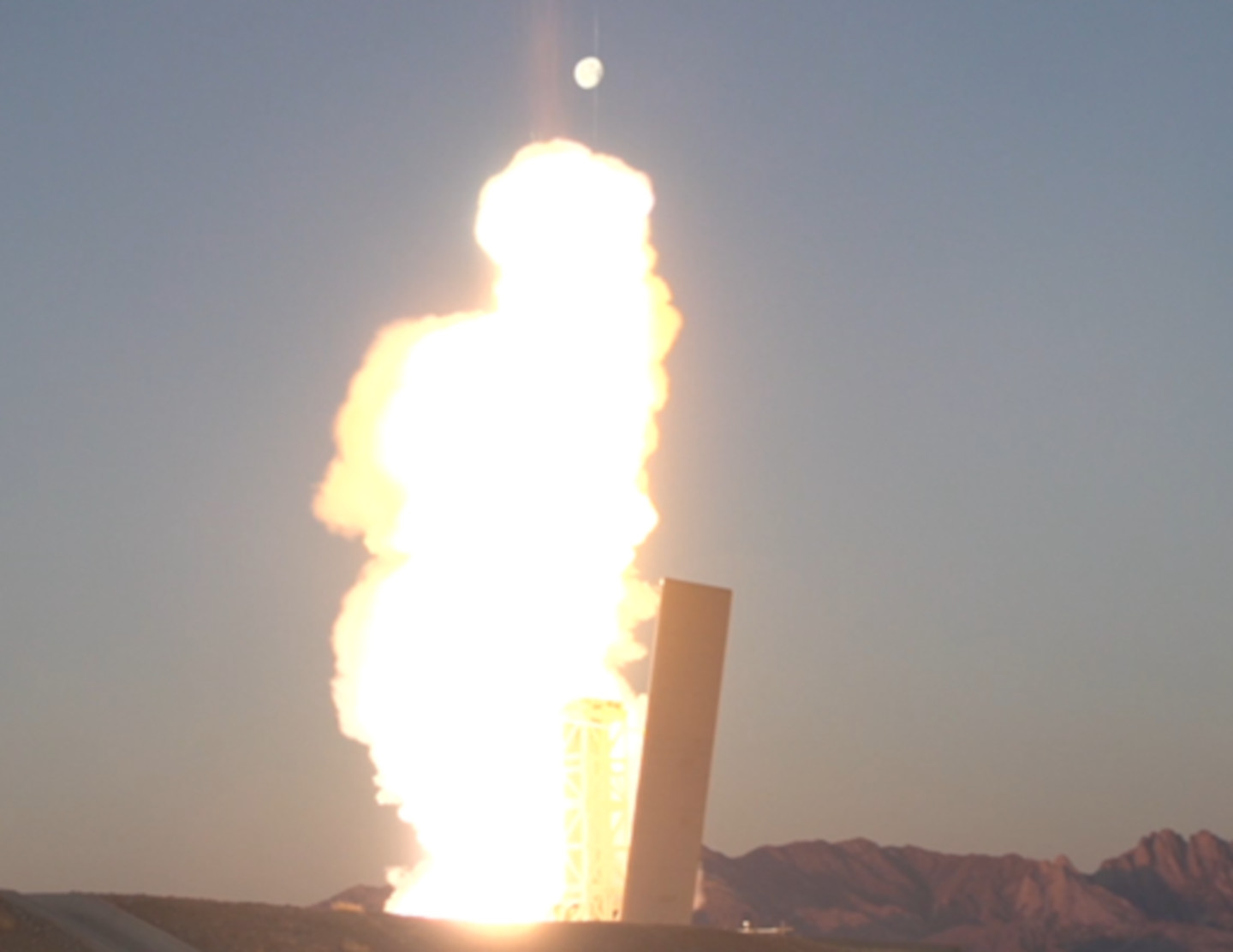Lockheed Martin has announced that it has successfully test-fired a PAC-3 Missile Segment Enhancement (MSE) interceptor from an MK-70 containerized launch platform to engage a cruise missile target in flight.
In a press release issued on May 20, Lockheed Martin detailed the use of a Mk-41-derived four-cell Mk 70-series containerized launcher for the test. The test was conducted in partnership with multiple Department of Defense Services and Components.
The launch was executed using the Virtualized Aegis Weapon System, a modular and scalable version of the proven Aegis Combat System.
The company said, “This test marks the first time PAC-3 MSE was launched in this configuration, utilizing the Virtualized Aegis Weapon System, to intercept a live target.”
Tom Copeman, Vice President of Strategy and Naval Programs at Lockheed Martin, commented on the successful test, “This successful test showcases Lockheed Martin’s commitment to developing mission-focused, integrated technology to keep those who serve ahead of evolving threats.”

Copeman further highlighted the potential of these systems to provide a proven Integrated Air and Missile Defense (IAMD) capability to the US, bolstering its defense against advanced, maneuverable threats.
The integration of the Aegis Weapon System with the PAC-3 MSE interceptor commenced in 2017 through a separate effort funded by the Missile Defense Agency.
However, Lockheed’s testing endeavors have predominantly been internally funded, underscoring the company’s efforts to advance defense capabilities.
With nearly 30 years of history with the Army, the PAC-3 system has undergone continuous upgrades, including the newer PAC-3 MSE configuration.
On the ground, soldiers typically utilize Patriot launchers to deploy the interceptors against targets such as tactical ballistic missiles, cruise missiles, and aircraft. Thus, the interceptors essentially serve as an air defense system.
The recent test represents a crucial step in integrating this proven missile technology into the Navy’s vessels. The integration of the PAC-3 MSE interceptor with Navy vessels capitalizes on the high-resolution and highly sensitive capabilities of the Aegis radar.
Operating at a higher power density with greater fidelity and range, the Aegis radar enhances target detection and tracking, facilitating precise interception by fired from ship decks.
The Significance Of The Successful Test
Lockheed Martin’s recent successful test-firing of the Patriot Advanced Capability-3 Missile Segment Enhancement (PAC-3 MSE) interceptor from a containerized launch platform holds significant implications for the US Navy’s strategic capabilities, particularly in addressing growing concerns about maintaining a steady supply of surface-to-air and other missiles during-potential-high-end conflicts.
The US Navy highlighted that the addition of PAC-3 MSE to Navy ships will fill a gap and complement the existing Vertical Launch System (VLS) inventory of surface-to-air interceptors.
Further, it will offer broader production opportunities, providing a critical asset in confronting contemporary security challenges, especially in the Pacific theater against adversaries like China.
The current geopolitical landscape underscores the pressing need for enhanced missile defense capabilities, with cruise missiles emerging as a threat category.
China and Russia continue to develop and deploy a wide range of cruise missiles, some boasting hypersonic speeds. Therefore, the integration of the PAC-3 MSE, the latest and most capable variant in the PAC-3 line, is significant to address this pressing need for versatile and production-ready missile defense solutions.

Early this year, Lockheed Martin highlighted that the PAC-3 MSE overlaps with several missions currently fulfilled by the Raytheon-made Standard Missile-6. By supplementing the Navy’s inventory with PAC-3 MSE, the SM-6 inventory is freed up for offensive measures that the PAC-3 cannot accomplish, enhancing operational flexibility.
Also, the marginal cost difference between the PAC-3 MSE and the SM-6, as indicated by the Pentagon’s 2025 Fiscal Year budget request, makes the PAC-3 MSE an attractive option for expanding the Navy’s missile inventory without significantly increasing expenditure.
The active production of PAC-3 MSE, coupled with increasing demand from Patriot operators worldwide, underscores its effectiveness and reliability in addressing diverse threats.
In recent years, the Patriot system has achieved success in tracking and intercepting maneuvering cruise missiles from the ground, and it is now extending its capabilities to include maritime warfare environments.
Recent successful deployments of Patriot systems, including PAC-3 interceptors, in the Ukrainian conflict have demonstrated their prowess against a wide array of threats, including ballistic missiles.
Additionally, the manufacturer’s commitment to meet the growing demand is evident through significant investments aimed at expanding annual production rates, with plans to increase production from 500 to 650 PAC-3 MSEs by 2027.
- Contact the author at ashishmichel(at)gmail.com
- Follow EurAsian Times on Google News





